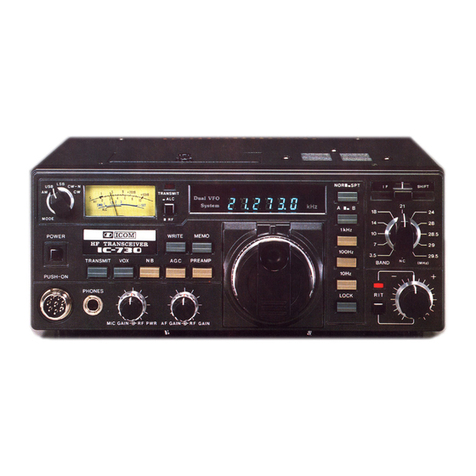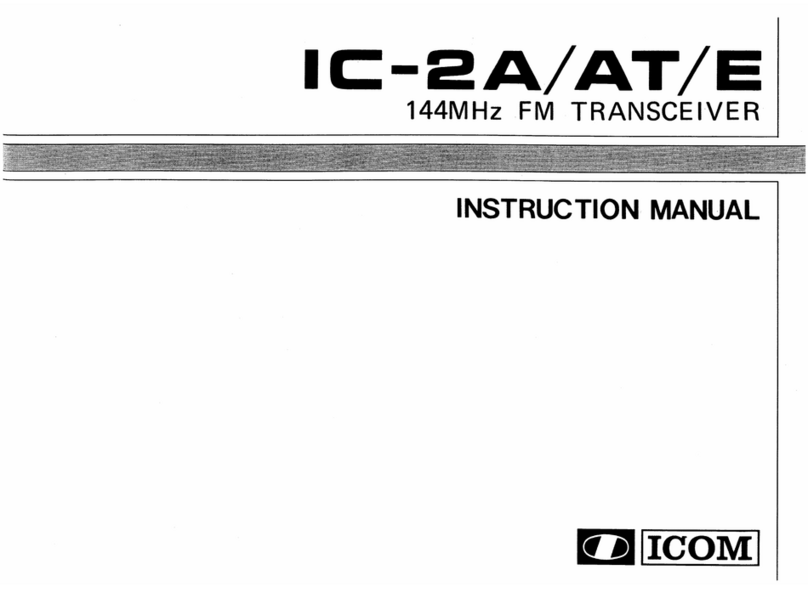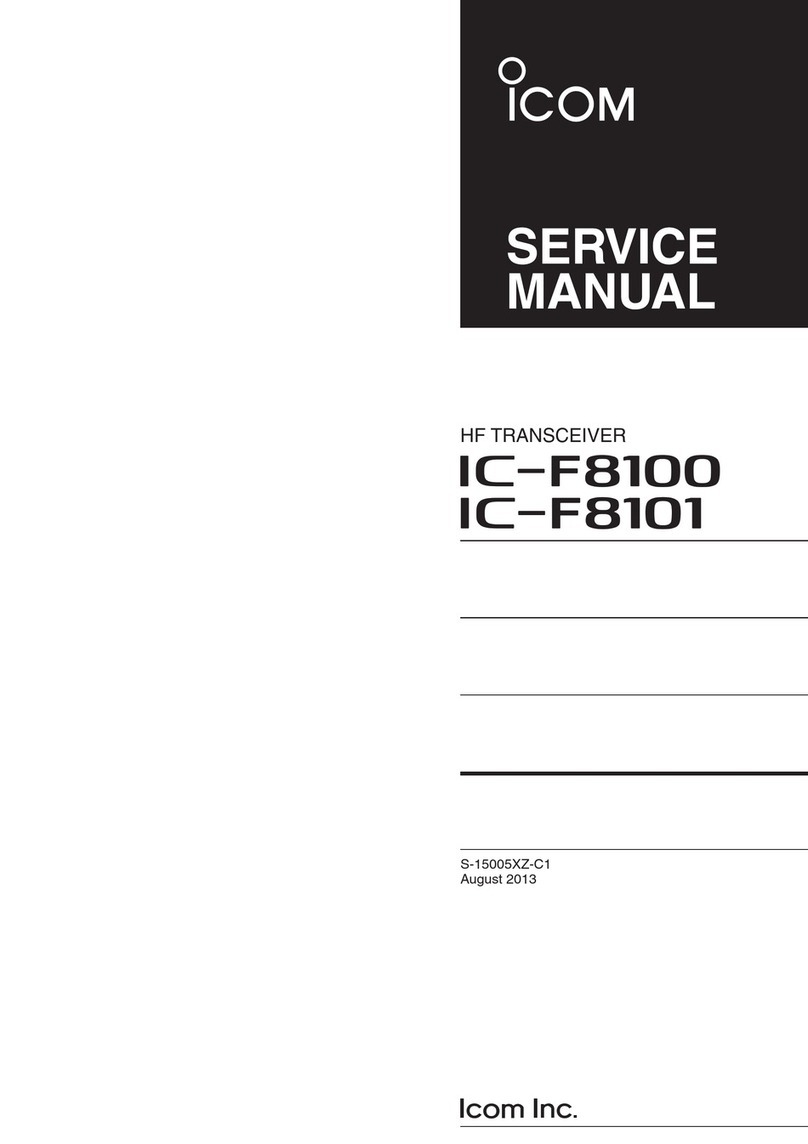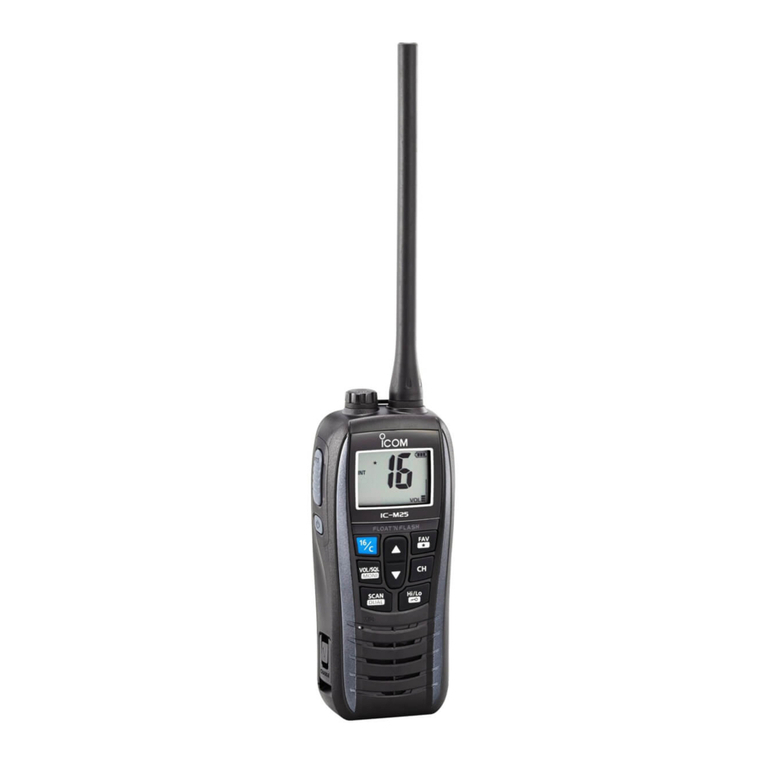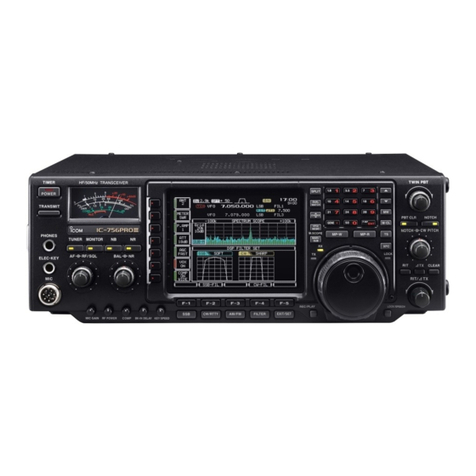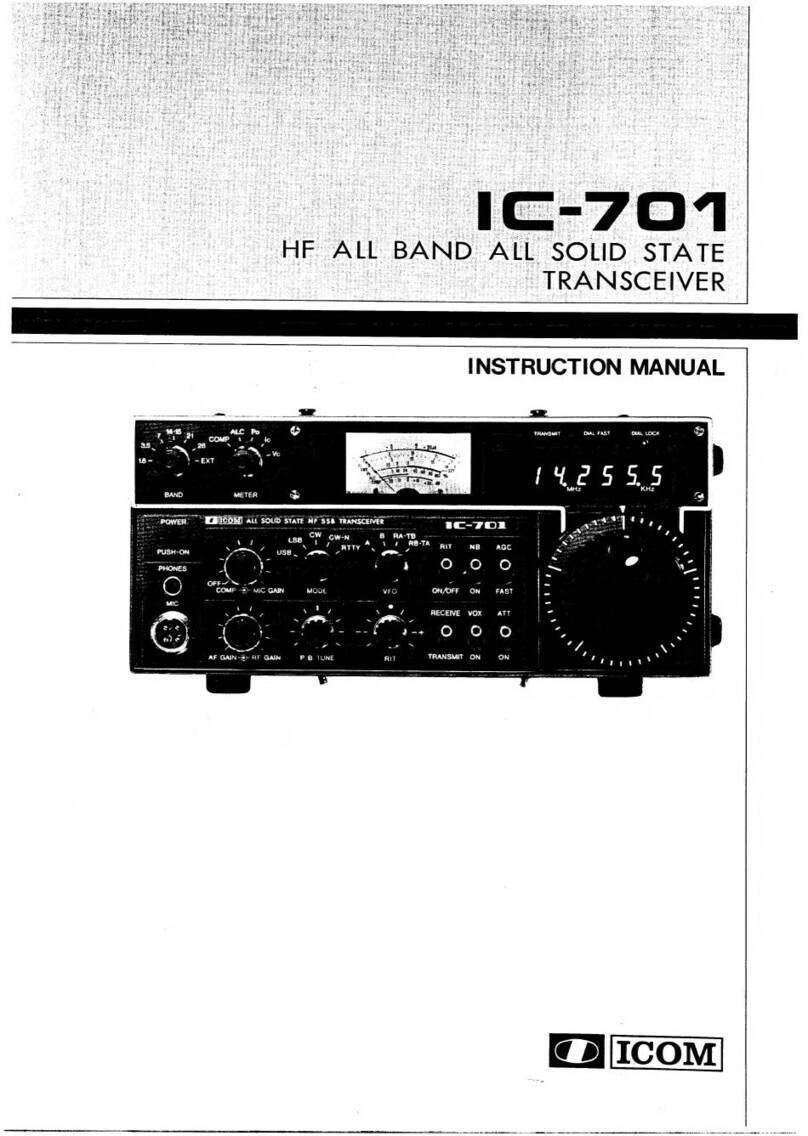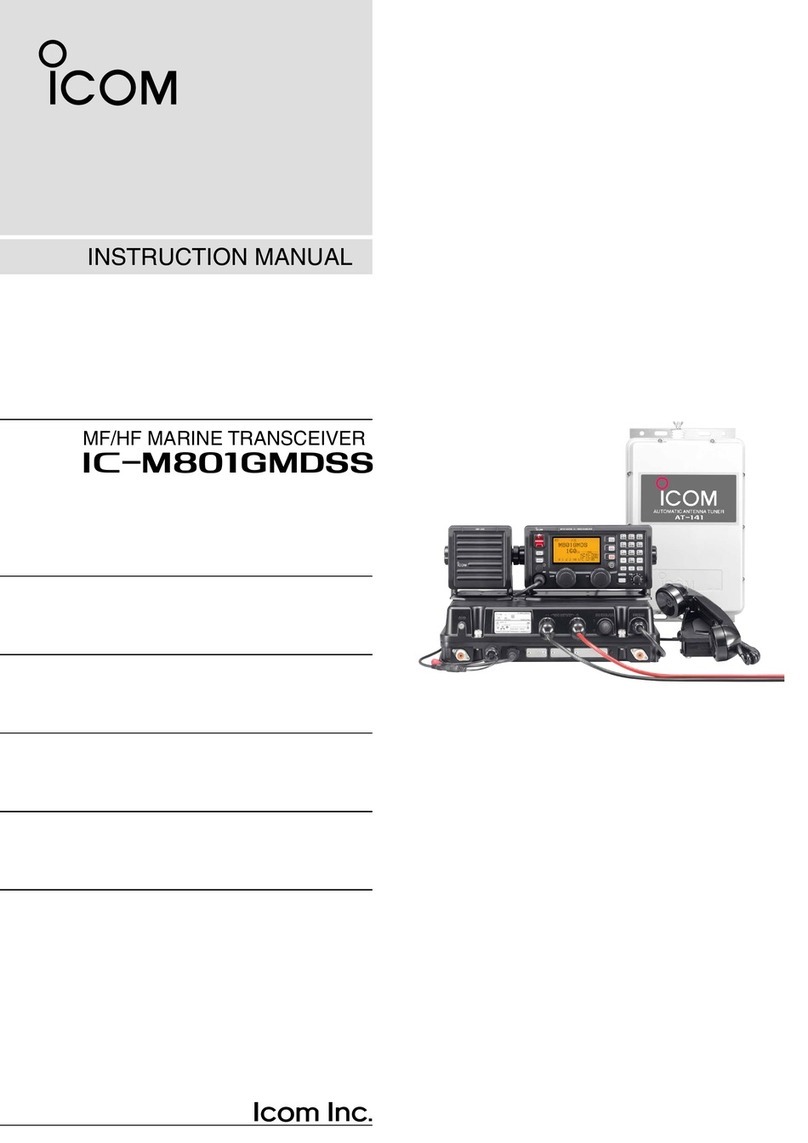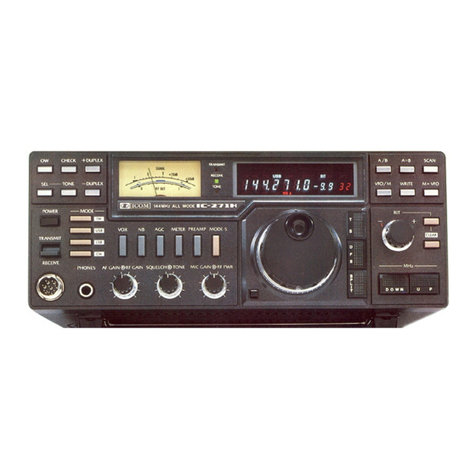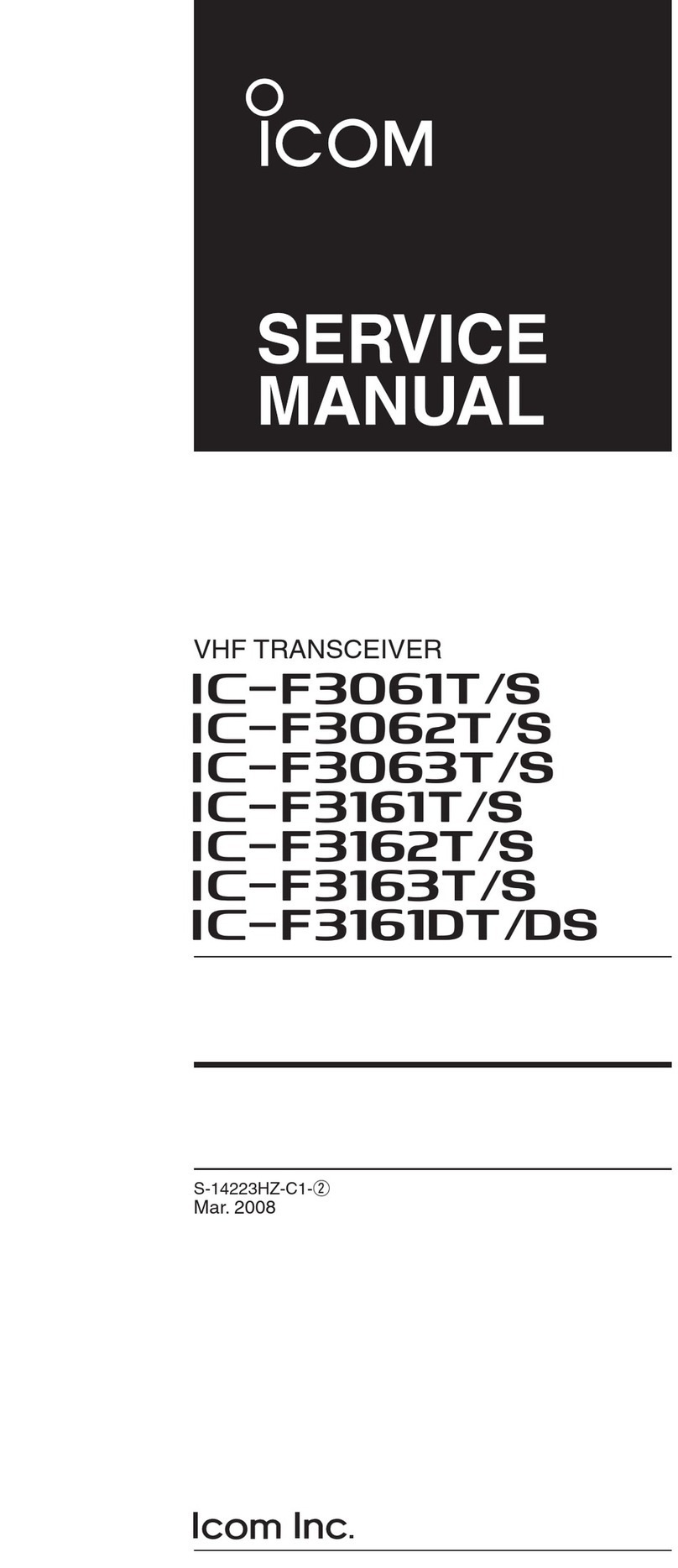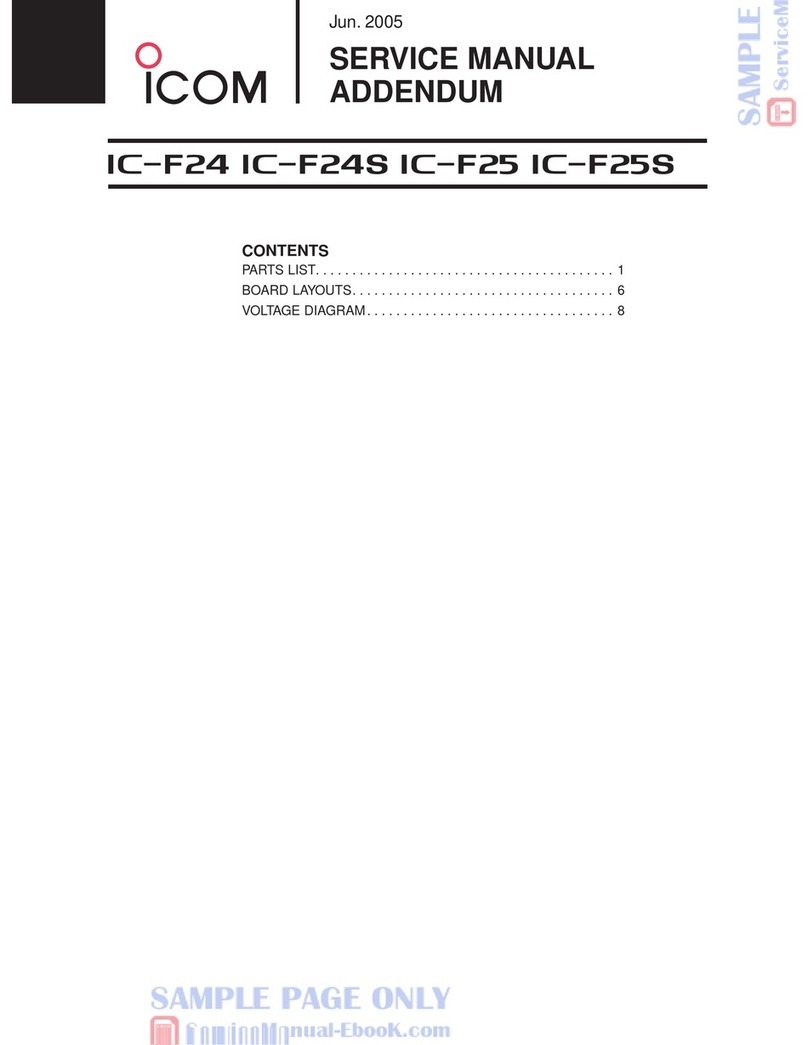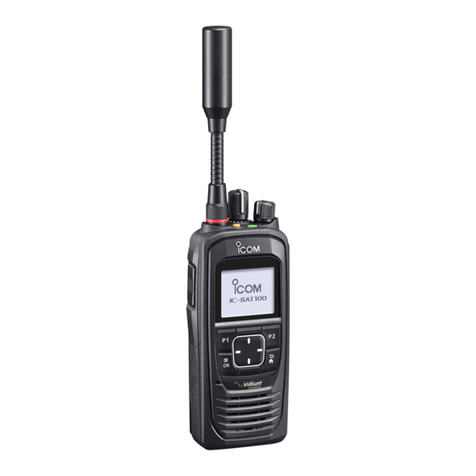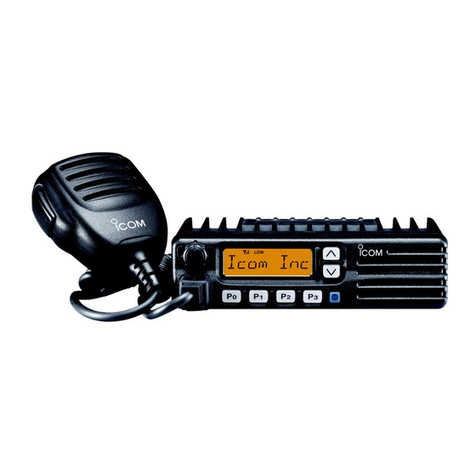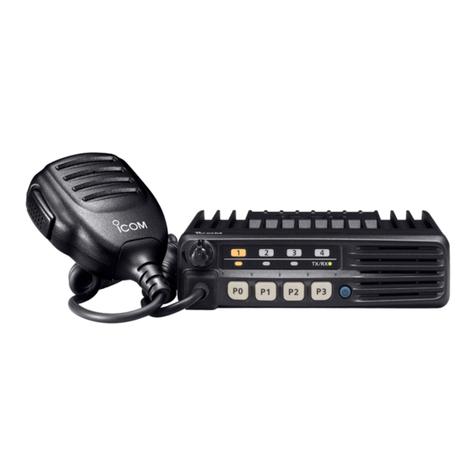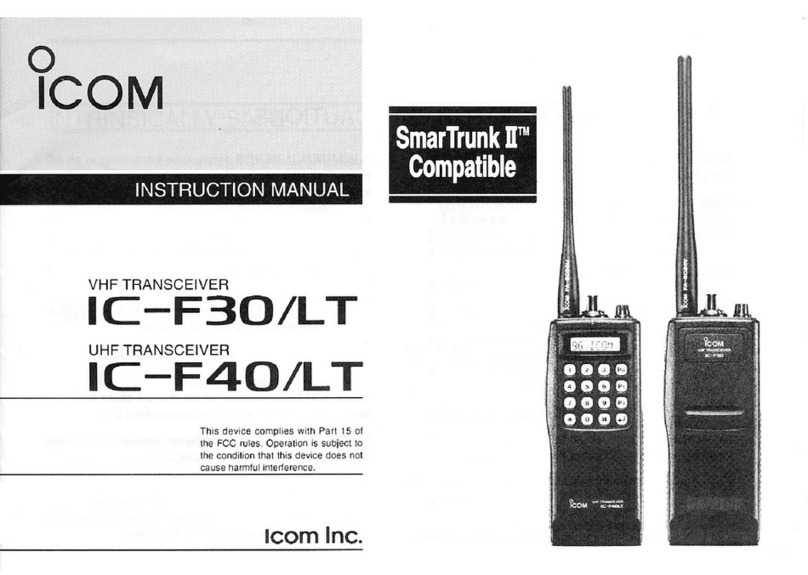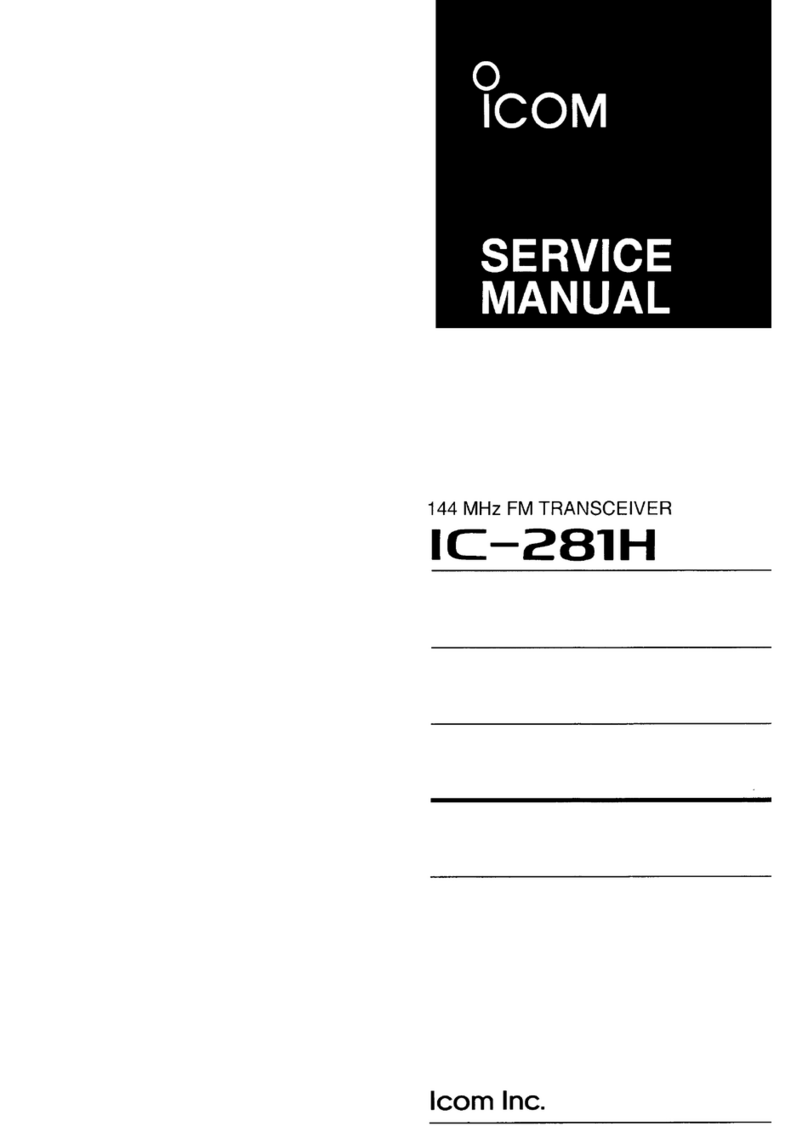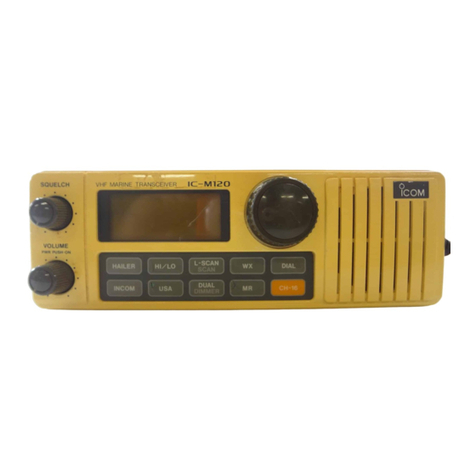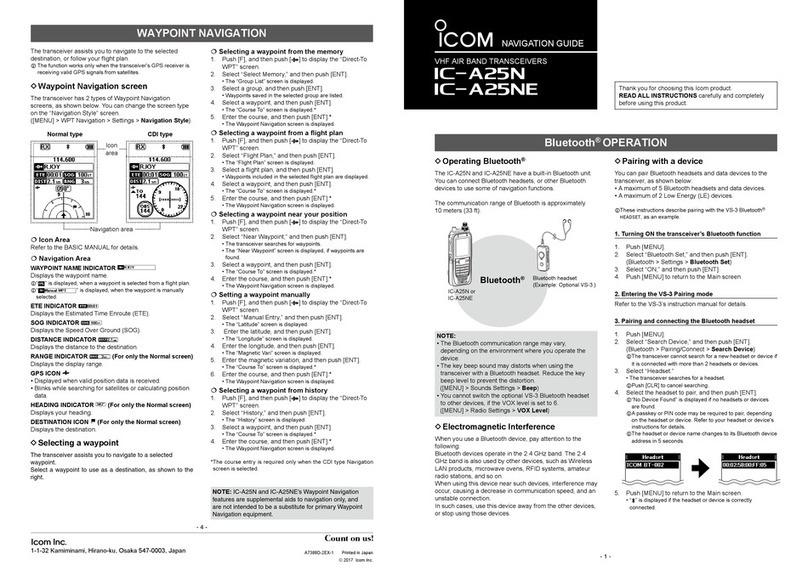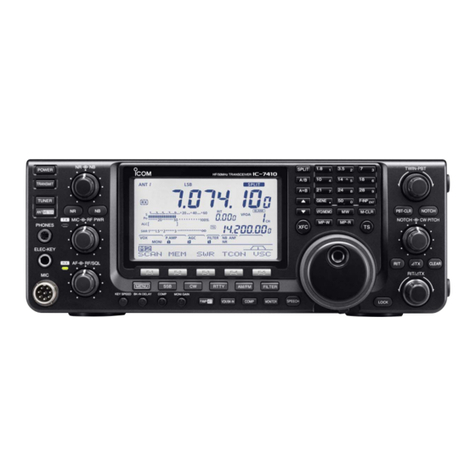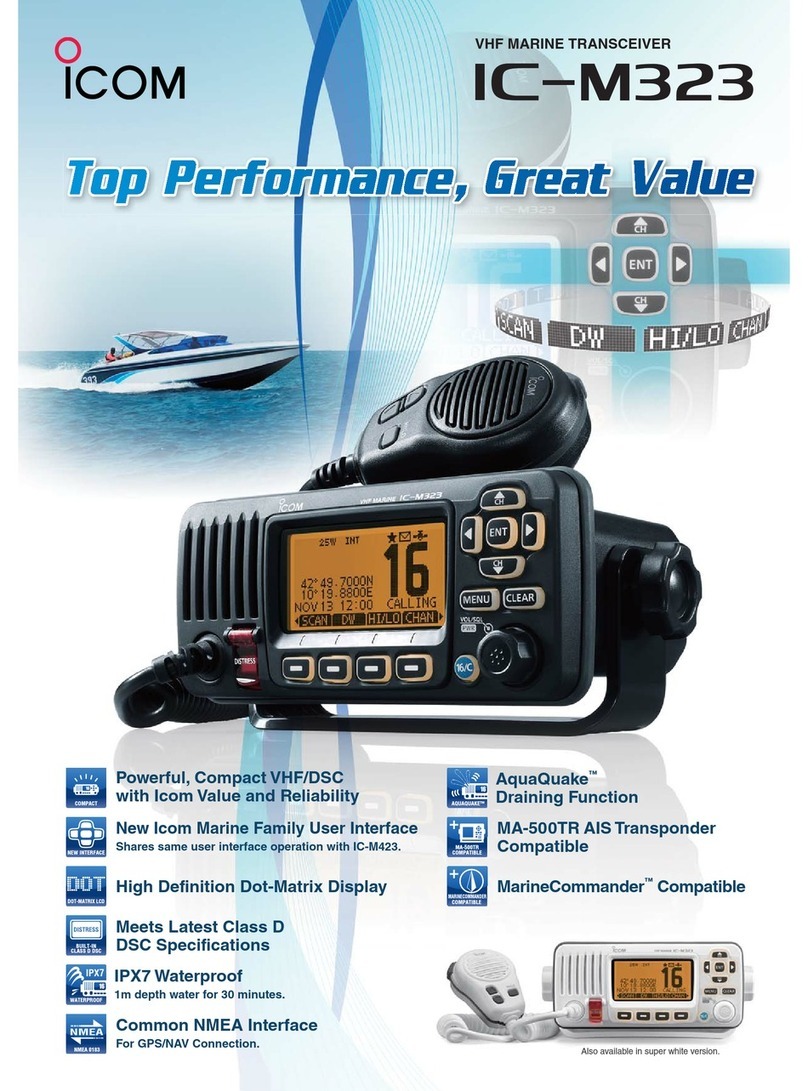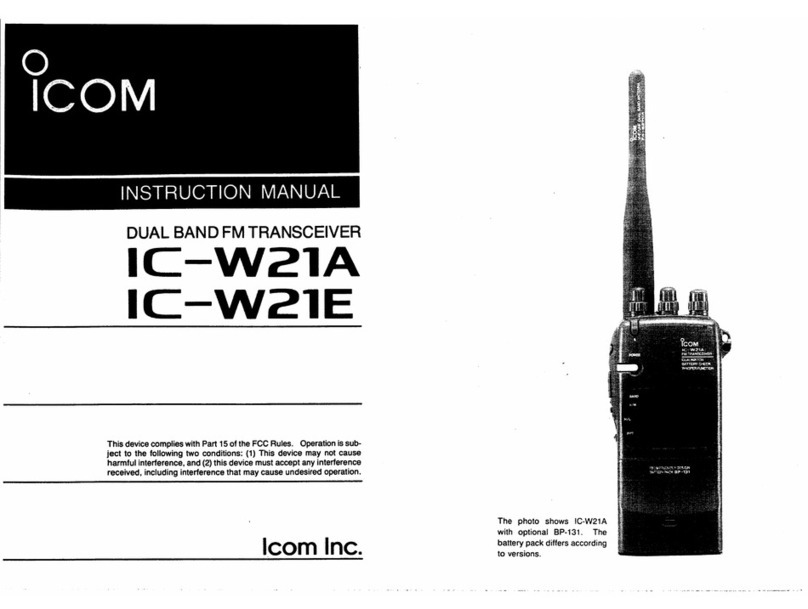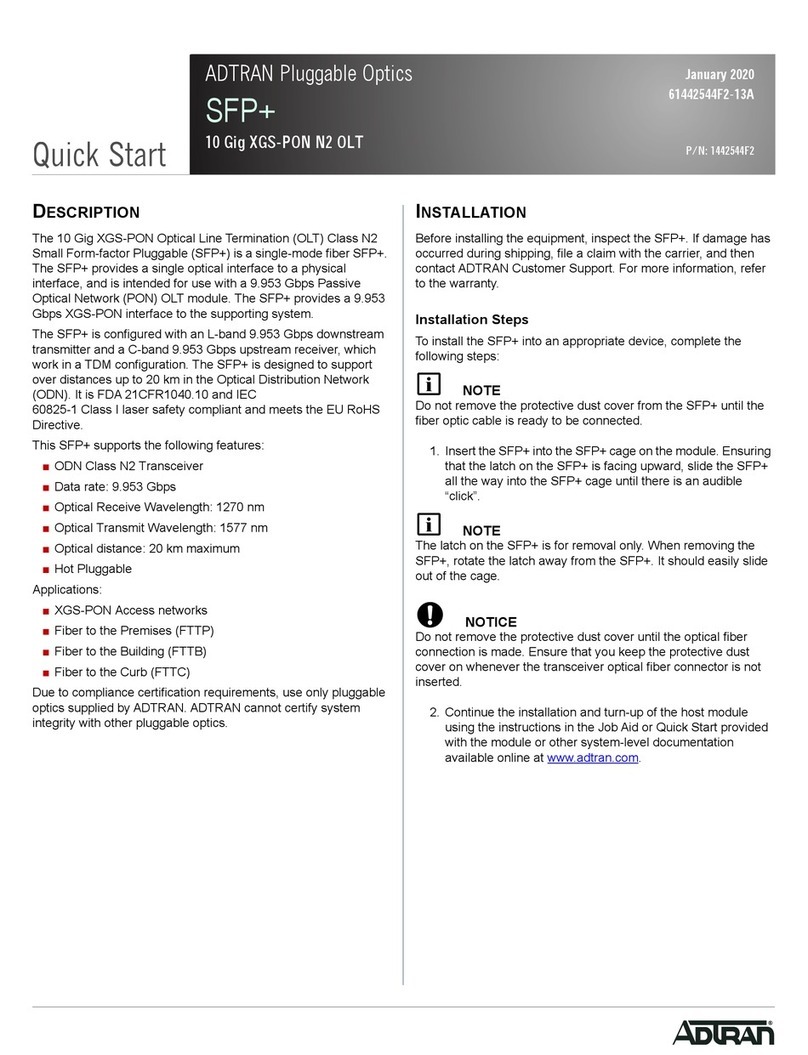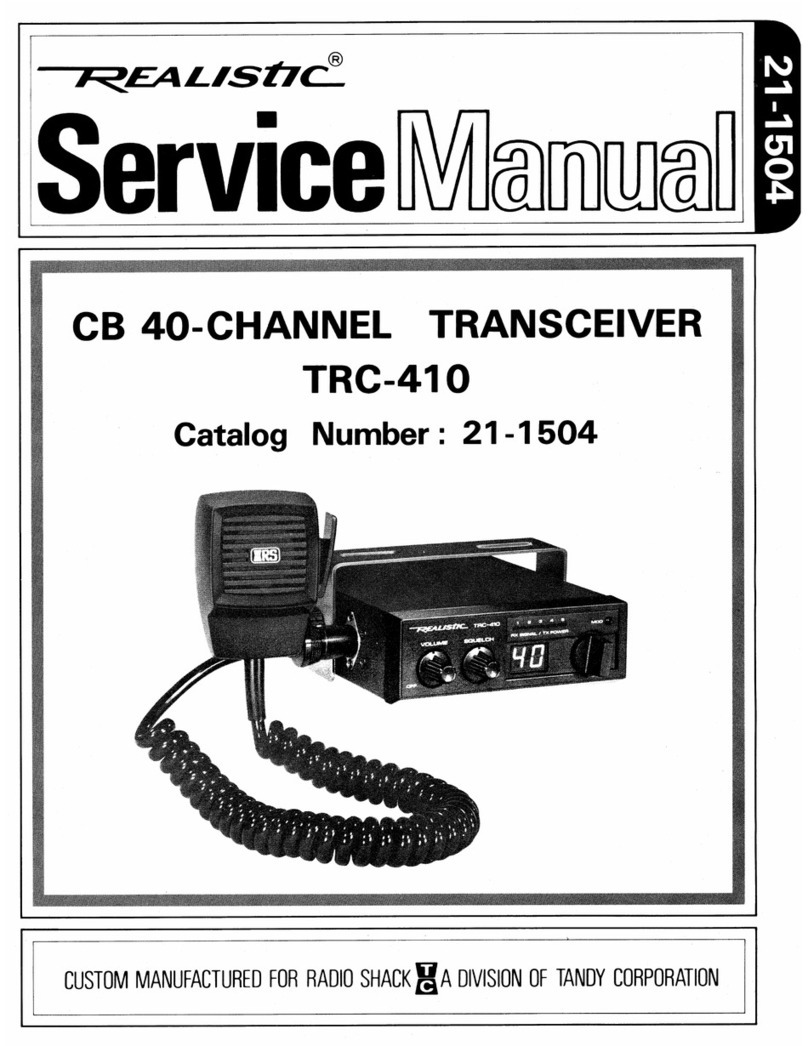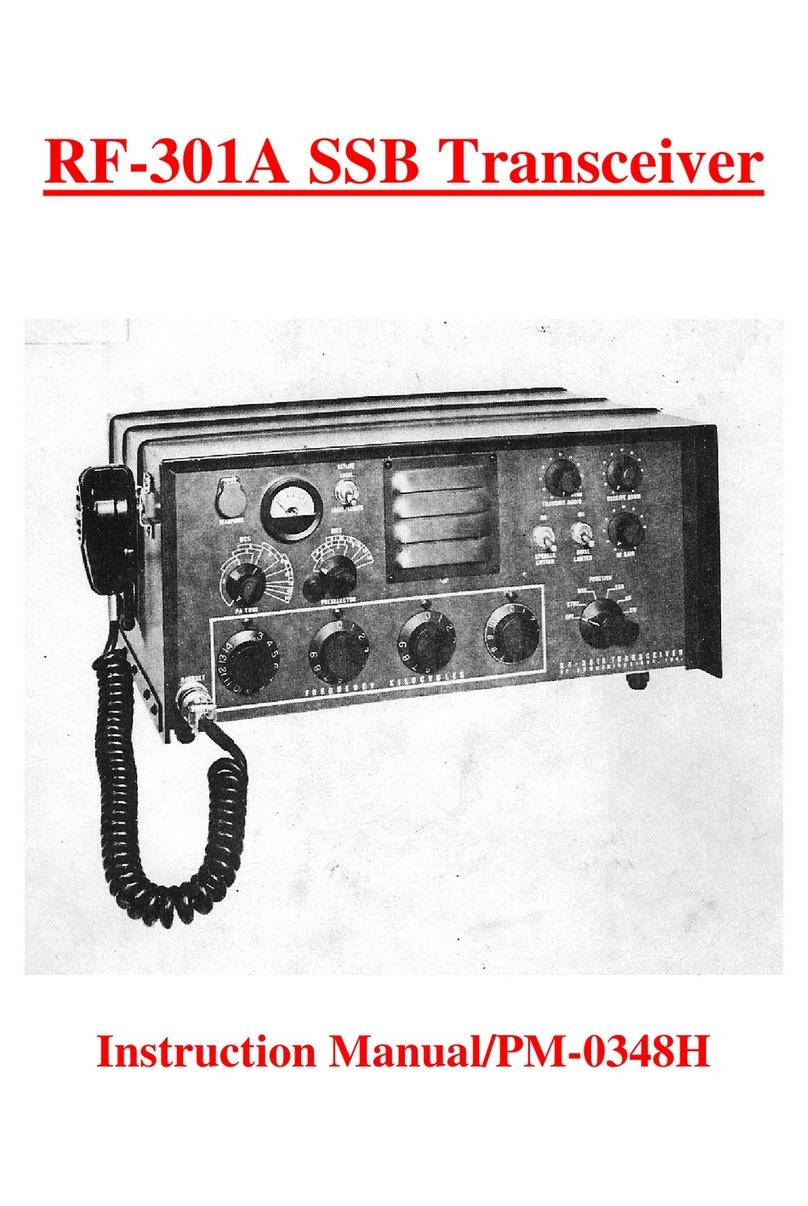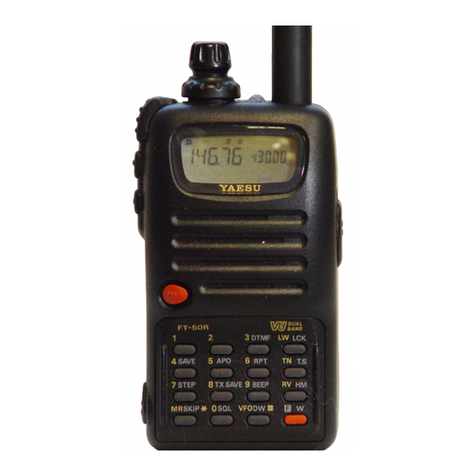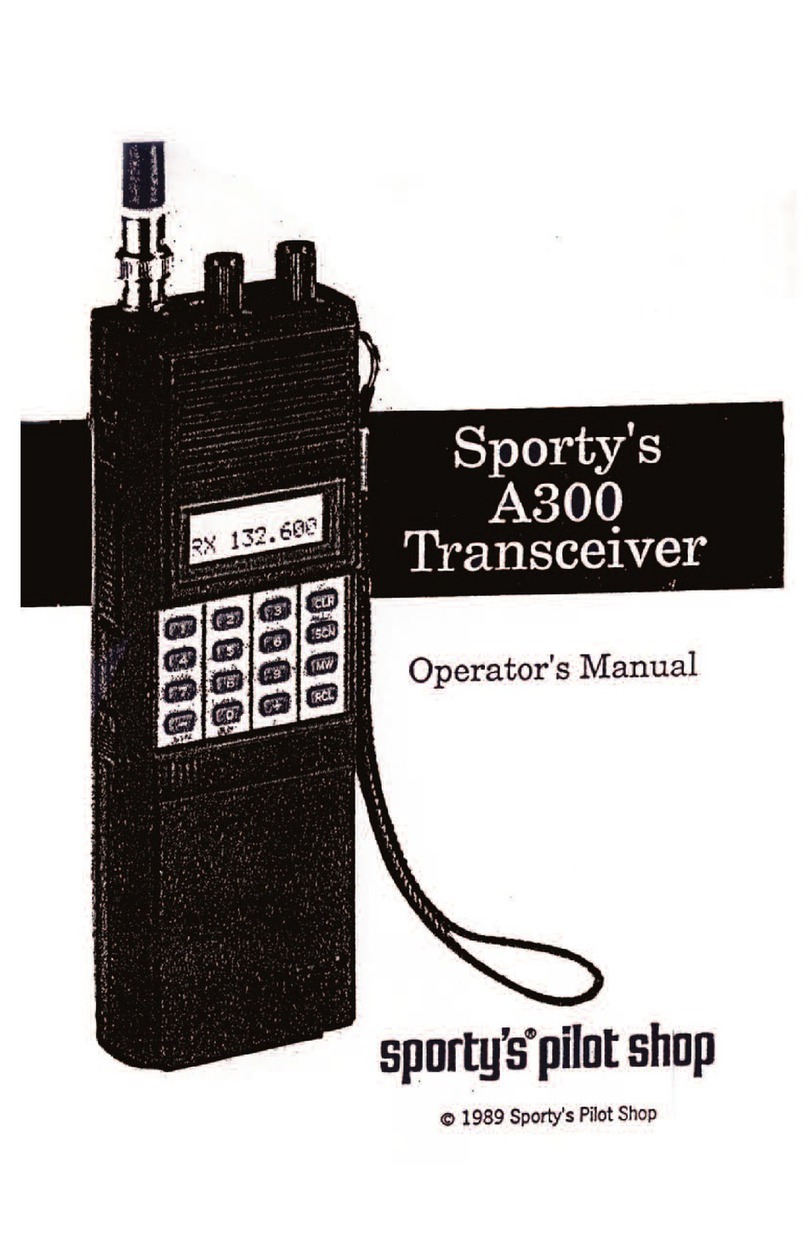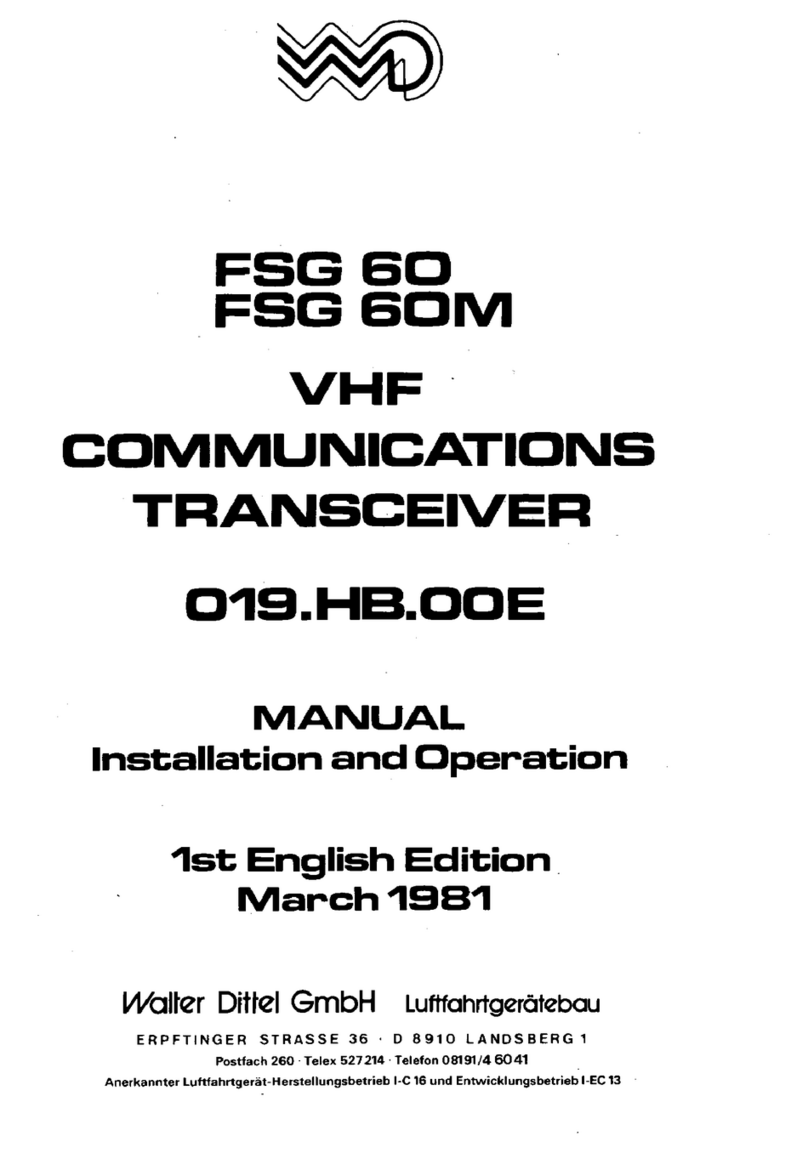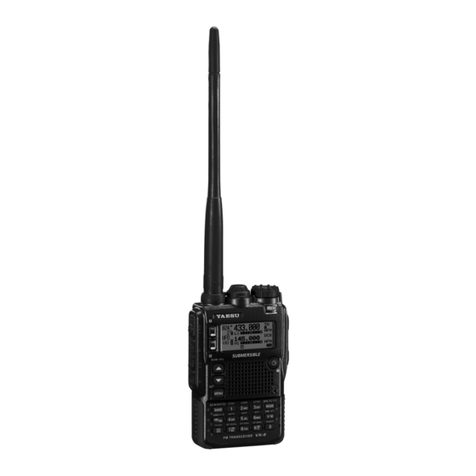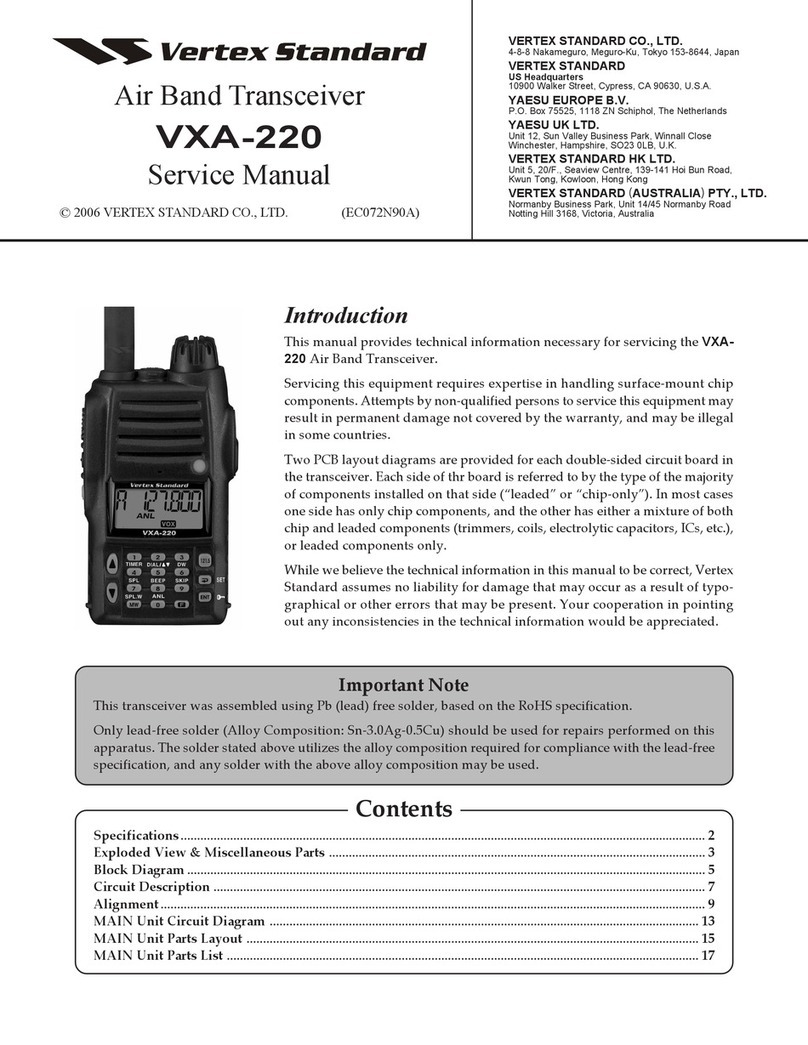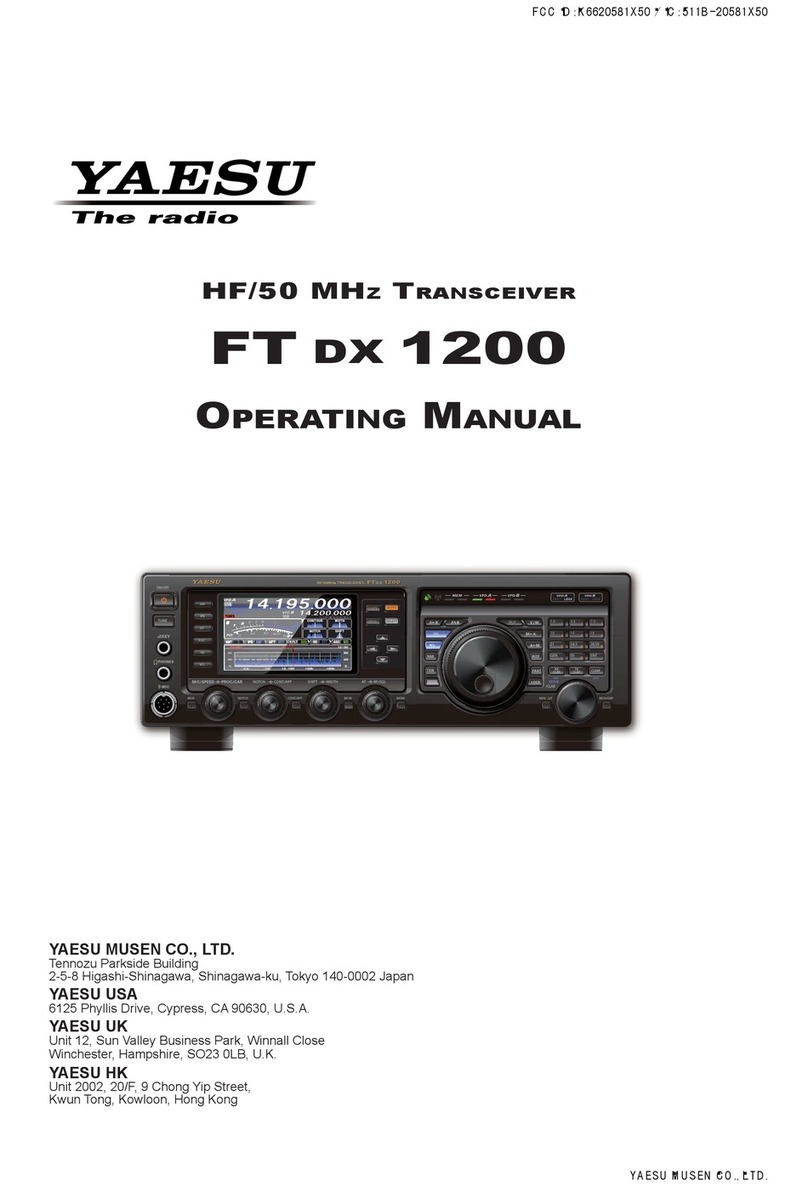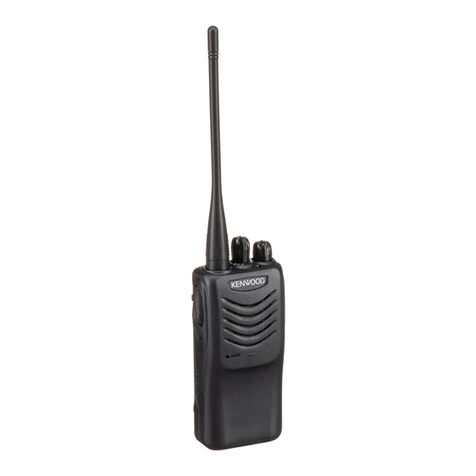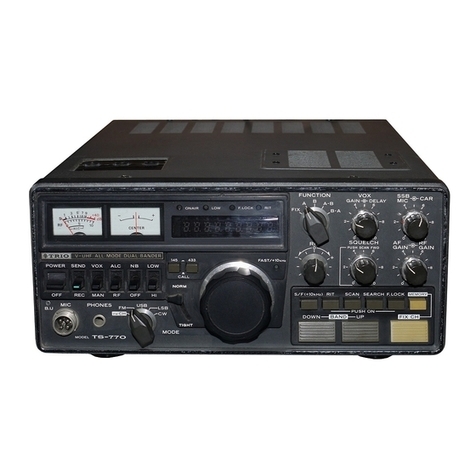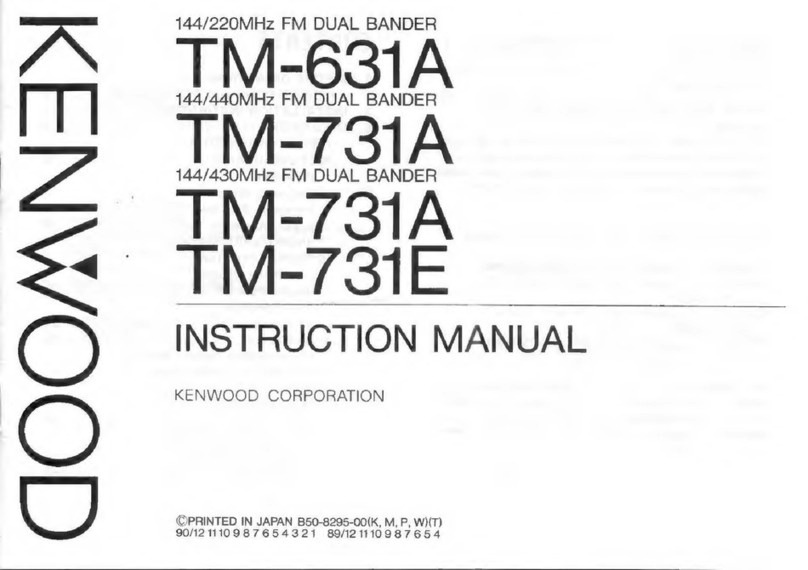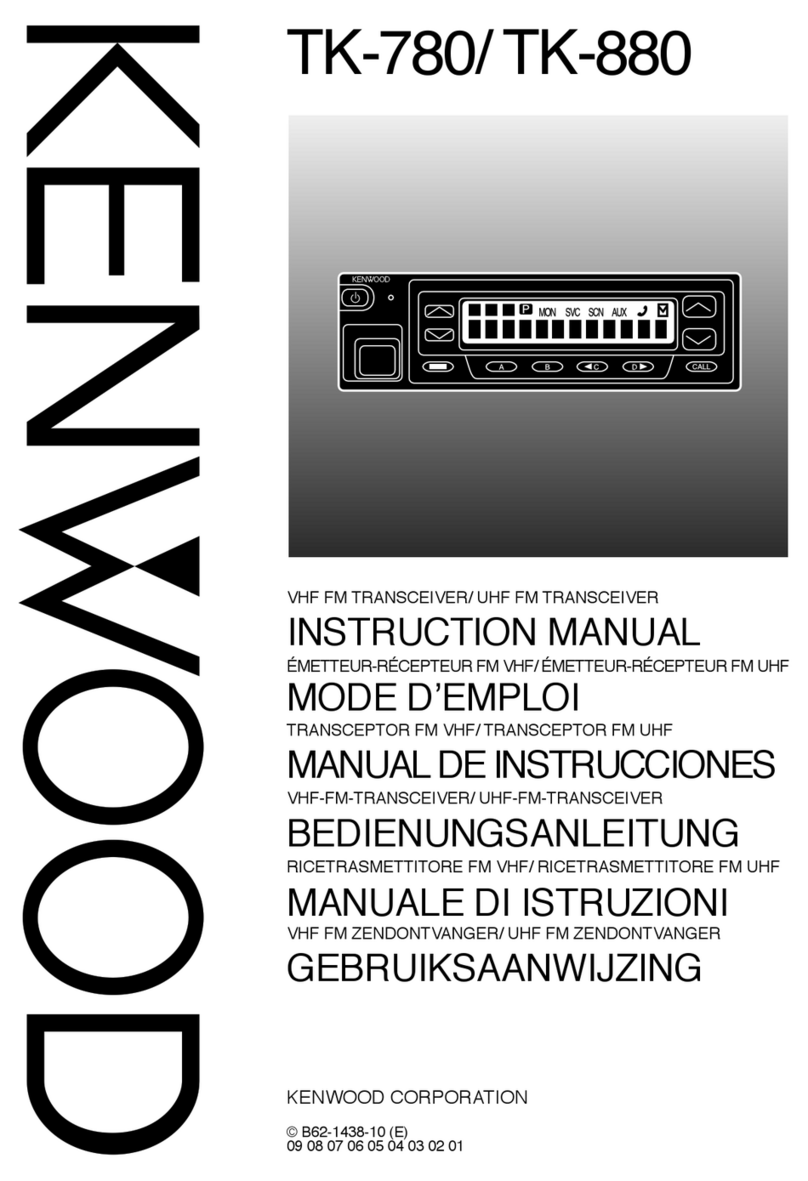Icom IC-F29DR2 Installation guide

ENGLISH
MANUALE BASE
NOTICE DE BASE
MANUAL BÁSICO
BASIS BEDIENUNGSANLEITUNG
BASIC MANUAL
iF29DR2
dPMR446/PMR446 TRANSCEIVER
dPMR446/PMR446-HANDFUNKGERÄT
TRANSCEPTOR dPMR446/PMR446
PORTATIF dPMR446/PMR446
RICETRASMETTITORE dPMR446/PMR446
FRANÇAIS DEUTSCHITALIANO ESPAÑOL

1
READ ALL INSTRUCTIONS carefully and
completely before using the transceiver.
SAVE THIS INSTRUCTION MANUAL — This
instruction manual contains important operating instructions
for the IC-F29DR2 dPMR446/PMR446 TRANSCEIVER.
This transceiver includes some functions that are usable
only when they are preset by your dealer. Ask your dealer
for details.
For more information, download the IC-F29DR2 operating
guide from the Icom web site.
(http://www.icom.co.jp/world/support)
EXPLICIT DEFINITIONS
WORD DEFINITION
RDANGER! Personal death, serious injury or an
explosion may occur.
RWARNING! Personal injury, re hazard or electric
shock may occur.
CAUTION Equipment damage may occur.
NOTE
If disregarded, inconvenience only. No
risk of personal injury, re or electric
shock.
IMPORTANT PRECAUTIONS
RDANGER! NEVER short the terminals of the battery
pack. Shorting may occur if the terminals touch metal
objects such as a key, so be careful when placing the
battery packs (or the transceiver) in bags, and so on. Carry
them so that shorting cannot occur with metal objects.
Shorting may damage not only the battery pack, but also the
transceiver.
RDANGER! NEVER use and charge Icom battery packs
with non-Icom transceivers or non-Icom chargers. Only Icom
battery packs are tested and approved for use with Icom
transceivers or charged with Icom chargers. Using thirdparty
or counterfeit battery packs or chargers may cause smoke,
re, or cause the battery to burst.
R WARNING! NEVER hold the transceiver so that the
antenna is very close to, or touching exposed parts of the
body, especially the face or eyes, while transmitting. The
transceiver will perform best if the microphone is 5 to 10 cm
away from the lips and the transceiver is vertical.
RWARNING! NEVER operate the transceiver with a
headset or other audio accessories at high volume levels.
If you experience a ringing in your ears, reduce the volume
level or discontinue use.
RWARNING! NEVER operate the transceiver while driving
a vehicle. Safe driving requires your full attention—anything
less may result in an accident.
ENGLISH

2
ENGLISH
CAUTION: DO NOT operate the transceiver unless the
exible antenna, battery pack and jack cover are securely
attached. Conrm that the antenna and battery pack are dry
before attaching. Exposing the inside of the transceiver to
dust or water can cause serious damage to the transceiver.
CAUTION: DO NOT
place or leave the transceiver in direct
sunlight or in places with temperatures below –25°C or above
+55°C.
CAUTION: DO NOT modify the transceiver. The
specications may change and then the transceiver may not
comply with the requirements of required regulations. The
transceiver warranty does not cover any problems caused
by unauthorized modication.
CAUTION: DO NOT use harsh solvents such as Benzine
or alcohol when cleaning, because they will damage the
transceiver surfaces.
DO NOT
operate the transceiver near unshielded electrical
blasting caps or in an explosive atmosphere.
DO NOT
push [PTT] when you do not actually intend to
transmit.
BE CAREFUL! The transceiver will become hot when
operating it continuously for long periods of time.
BE CAREFUL!
The transceiver meets IP67* requirements
for dust-tight and waterproof protection. However, once the
transceiver has been dropped, dust-tight and waterproof
protection cannot be guaranteed because of possible
damage to the transceiver’s case or the waterproof seal.
* Only when the jack cover
or the optional HM-168LWP,
HS-94LWP, or HS-95LWP is attached.
BE SURE to turn OFF the transceiver power before
connecting the supplied or optional equipment.
Even when the transceiver power is OFF, a slight current
still ows in the circuits. Remove the battery pack from the
transceiver when not using it for a long periods of time.
Otherwise, the installed battery pack will become exhausted,
and will need to be recharged or replaced.
Icom, Icom Inc. and Icom logo are registered trademarks of Icom
Incorporated (Japan) in Japan, the United States, the United Kingdom,
Germany, France, Spain, Russia, Australia, New Zealand, and/or other
countries.
PRECAUTIONS

3
SUPPLIED ACCESSORIES
Power adapter*
(for the battery charger)
Battery pack* Belt clipBattery charger
RECOMMENDATION
ABOUT CE AND DOC
CLEAN THE TRANSCEIVER THOROUGHLY IN A BOWL
OF FRESH WATER after exposure to saltwater, and dry
it before operating. Otherwise, the transceiver’s keys,
switches, and controllers may become unusable, due to salt
crystallization, and/or the charging terminals of the battery
pack may corrode.
NOTE: If the transceiver’s waterproof protection appears
defective, carefully clean it with a soft, wet (fresh water)
cloth, then, dry it before operating.
The transceiver may lose its waterproof protection if the
case, jack cap, or connector cover is cracked or broken, or
the transceiver has been dropped.
The crossed-out wheeled-bin symbol on your
product, literature, or packaging reminds you
that in the European Union, all electrical and
electronic products, batteries, and
accumulators (rechargeable batteries) must be
taken to designated collection locations at the
end of their working life. Do not dispose of these products
as unsorted municipal waste. Dispose of them according to
the laws in your area.
* Not supplied, or the shape is different,
depending on the transceiver version.
DISPOSAL
Hereby, Icom Inc. declares that the versions of IC-F29DR2
which have the “CE” symbol on the product, comply with the
essential requirements of the Radio Equipment Directive,
2014/53/EU, and the restriction of the use of certain
hazardous substances in electrical and electronic equipment
Directive, 2011/65/EU. The full text of the EU declaration of
conformity is available at the following internet address:
http://www.icom.co.jp/world/support

ENGLISH
4
The AMBE+2™ voice coding Technology embodied in this
product is protected by intellectual property rights including
patent rights, copyrights and trade secrets of Digital Voice
Systems, Inc. This voice coding Technology is licensed
solely for use within this Communications Equipment.
The user of this Technology is explicitly prohibited from
attempting to extract, remove, decompile, reverse engineer,
or disassemble the Object Code, or in any other way convert
the Object Code into a human-readable form. U.S. Patent
Nos.
#5,870,405, #5,826,222, #5,754,974, #5,701,390,
#5,715,365, #5,649,050, #5,630,011, #5,581,656,
#5,517,511, #5,491,772, #5,247,579, #5,226,084 and
#5,195,166.
TABLE OF CONTENTS
VOICE CODING TECHNOLOGY
Icom is not responsible for the destruction, damage to, or
performance of any Icom or non-Icom equipment, if the
malfunction is because of:
• Force majeure, including, but not limited to, res, earthquakes,
storms, oods, lightning, other natural disasters, disturbances,
riots, war, or radioactive contamination.
• The use of Icom transceivers with any equipment that is not
manufactured or approved by Icom.
IMPORTANT ........................................................................1
EXPLICIT DEFINITIONS......................................................1
PRECAUTIONS....................................................................2
DISPOSAL............................................................................3
SUPPLIED ACCESSORIES.................................................3
RECOMMENDATION...........................................................3
ABOUT CE AND DOC..........................................................3
VOICE CODING TECHNOLOGY.........................................4
1 PANEL DESCRIPTION ��������������������������������������������������5
■Turning ON the power ................................................5
■Front panel..................................................................5
2 BASIC OPERATION ������������������������������������������������������6
■Receiving and Transmitting ........................................6
■Call-Ring operation .....................................................6
■Smart-Ring operation..................................................6
3 BATTERY CHARGING ��������������������������������������������������7
■Caution .......................................................................7
■Battery chargers .........................................................9
4 OPTIONS����������������������������������������������������������������������11
5 CHANNEL FREQUENCY LIST������������������������������������12
COUNTRY CODE LIST������������������������������������������������������61

5
PANEL DESCRIPTION
1
■Front panel
DFactory default key assignment
[Upper]
zPush to make a Smart-Ring call.
zHold down to make a Call-Ring call.
LSee the next page for more detail.
[Lower]
Hold down to release the C.Tone* mute. The
mute is released even if the received signal does
not include a matching C.Tone*.
[Top]
zPush to select Zone 1, Zone 2, Zone 3, or Zone 4.
zHold down to turn the Channel Announce
function ON or OFF.
NOTE: The Zone number is announced when
selecting a Zone, regardless of the Channel
Announce setting.
* CTCSS tone or DTCS code
DAbout the LED Indicator
• Lights red while transmitting.
• Lights green while receiving a signal.
• You should charge the battery when the indicator slowly
blinks green.
• You must charge the battery when the indicator blinks
green fast.
Speaker
Microphone
[PTT] LED indicator
Antenna
[Upper]*
[Lower]*
*Other functions can be
assigned to these keys
with the CS-F29DR2
programming software
(purchase separately).
DAbout the Speaker microphone jack
The transceiver meets IP67 requirements for dust-tight
and waterproof protection only when the jack cover or
the optional HM-168LWP, HS-94LWP, or HS-95LWP is
attached.
■Turning ON the power
NOTE: For optimum life and operation, the battery must be
fully charged before using the transceiver for the rst time.
Rotate [VOL] to turn ON the power.
[Rotary Selector]
[VOL]
Speaker-
Microphone
jack
[Top]*

6
2
BASIC OPERATION
ENGLISH
■Receiving and Transmitting
Receiving
1. Rotate [Rotary Selector] to select a channel.
2. When receiving a call, rotate [VOL] to adjust the audio.
Transmitting
Wait until the channel is clear to avoid interference.
1.
While holding down [PTT], speak at your normal voice level.
2. Release [PTT] to receive.
NOTE: To insure the readability of your signal:
1. After pushing [PTT], pause briefly before you start
speaking.
2. Hold the microphone 5 to 10 cm from your mouth, and
then speak at your normal voice level.
■Call-Ring operation
This function sends the preset ringer to your group members.
NOTE: To use this function, the operating channel and
CTCSS tone must be the same on all of your group
transceivers.
Hold down [Upper] for 1 second to send the preset ringer.
• The ringer sounds while holding down [Upper].
• The same ringer sounds from your group members’ speaker.
■Smart-Ring operation
// only for the Analog channels //
This function has an answer back call feature. You can
conrm whether or not a call has reached your group
members, even if the operators are temporarily away from
their transceivers.
The called transceivers automatically send an answer back
call to your transceiver.
NOTE: To use this function, the operating channel and
CTCSS tone must be the same on all of your group
transceivers.
1. Push [Upper] to make a Smart-Ring call.
• When an answer back call is received, the transceiver sounds
beeps and the LED indicator blinks orange.
- Turn OFF the transceiver to stop the beeps and the LED
blinking.
• When no answer back call is received, the transceiver sounds
three short failure beeps.
2. Push [PTT] to answer the call and stop the beeps and
blinking.

7
BATTERY CHARGING
3
■Caution
NOTE: Misuse of Lithium-ion batteries may result in
the following hazards: smoke, re, or the battery may
rupture. Misuse can also cause damage to the battery or
degradation of battery performance.
DBattery caution
R
DANGER! NEVER strike or otherwise impact the battery
pack. Do not use the pack if it has been severely impacted or
dropped, or if it has been subjected to heavy pressure.
Battery damage may not be visible on the outside of the
case. Even if the surface of the pack does not show cracks or
any other damage, the cells inside may rupture or catch re.
RDANGER! NEVER leave the battery pack in areas with
temperatures above +60˚C. High temperature buildup in
the battery cells, such as could occur near res or stoves,
inside a sun-heated vehicle, or in direct sunlight for long
periods of time may cause the battery to rupture or catch
re. Excessive temperatures may also degrade pack’s
performance or shorten the battery cell’s life.
RDANGER! NEVER expose the battery pack to rain, snow,
salt water, or any other liquids. Do not charge or use a wet
battery pack. If the pack gets wet, be sure to wipe it dry
before using. The battery pack itself is not waterproof.
RDANGER! NEVER place battery packs near a re. Fire
or heat may cause them to rupture or explode. Dispose of
used packs in accordance with local regulations.
RDANGER! NEVER solder the battery cell’s terminals,
and NEVER modify the battery pack. This may cause heat
generation, and the battery cells may burst, emit smoke, or
catch re.
RDANGER! NEVER use the battery pack with a
transceiver for which it is not specied. Never use a pack
with any other equipment, or for any purpose that is not
specied in this instruction manual.
RDANGER! NEVER let uid from inside the battery cells
get in your eyes. If it does, blindness can result. Rinse
your eyes with clean water, without rubbing them, and
immediately go to a doctor
RWARNING! NEVER use the battery pack if it emits an
abnormal odor, heats up, or is discolored or deformed. If
any of these conditions occur, contact your Icom dealer or
distributor.
RWARNING! NEVER let uid from inside the battery cells
come in contact with your body. If it does, immediately wash
with clean water.
RWARNING! NEVER put the battery pack in a microwave
oven, high-pressure container, or in an induction heating
cooker. This could cause a re, overheating, or cause the
battery cells to rupture.

8
3
BATTERY CHARGING
ENGLISH
CAUTION: DO NOT use the battery pack out of the
specied temperature range, for the transceiver –25°C to
+55°C, and the battery itself –20°C to +60°C. Using the
pack out of its specied temperature range will reduce it’s
performance and the battery cell’s life. Please note that the
specied temperature range of the pack may exceed that of
the transceiver. In such cases, the transceiver may not work
properly because it is out of its operating temperature range.
CAUTION: Shorter battery pack life could occur if the pack is
left fully charged, completely discharged, or in an excessive
temperature environment (above 50˚C) for an extended
period of time. If the battery pack must be left unused for
a long time, it must be detached from the transceiver after
discharging. You may use the battery until the remaining
capacity is about half, then keep it safely in a cool dry place
in the following temperature range:
–20˚C to +50˚C (within a month)
–20˚C to +40˚C (within three months)
–20˚C to +20˚C (within a year)
BE SURE to replace the battery pack with a new one
approximately ve years after manufacturing, even if it still
holds a charge. The material inside the battery cells will
become weak after a period of time, even with little use.
The estimated number of times you can charge the pack
is between 300 and 500. Even when the pack appears to
be fully charged, the operating time of the transceiver may
become short when:
• Approximately ve years have passed since the pack was
manufactured.
• The pack has been repeatedly charged.
DCharging caution
RDANGER! NEVER charge the battery pack in areas with
extremely high temperatures, such as near res or stoves,
inside a sun-heated vehicle, or in direct sunlight. In such
environments, the safety/protection circuit in the pack will
activate and stop the charging.
R WARNING! NEVER charge the transceiver during a
lightning storm. It may result in an electric shock, cause a
re or damage the transceiver. Always disconnect the power
adapter before a storm.
RWARNING! NEVER charge or leave the battery pack in
the battery charger beyond the specied time for charging.
If the pack is not completely charged by the specied time,
stop charging and remove it from the battery charger.
Continuing to charge the pack beyond the specied time
limit may cause a re, overheating, or the battery cells may
rupture.
RWARNING! NEVER insert the transceiver (with the
battery pack attached) into the charger if it is wet or soiled.
This could corrode the battery charger terminals or damage
the charger. The charger is not waterproof.
CAUTION: NEVER charge the battery outside of the
specied temperature range: BC-213 (10˚C to 40˚C),
BC-214 (15˚C to 40˚C). Icom recommends charging the
battery at 20˚C. The battery may heat up or rupture if
charged out of the specied temperature range. Additionally,
battery performance or battery life may be reduced.

9
3BATTERY CHARGING
■Battery chargers
DRapid charging with the supplied BC-213
The BC-213 desktop charger rapidly charges the Li-ion
battery pack.
The BC-213 is used with the power adapter or the CP-23L
cigarette lighter cable (purchase separately).
• Charging time of the BP-280
Approximately 3.5 hours
CAUTION: DO NOT continue to charge if the charge
indicator lights orange and green alternately. This indicates
a charging failure is occurring.
NOTE: Charge the battery within the specied temperature
range of 10°C to 40°C. Otherwise, the charging time will
be longer, but the battery will not reach a full charge. While
charging, at the point where the temperature goes out of
the specied range, charging will automatically stop.
Battery pack
only
Transceiver
+ Battery pack
CP-23L
Can be used instead
of the power adapter.
(for a 12 V cigarette
lighter socket)
Turn OFF the power
Charge indicator
• Lights orange
while charging.
• Lights green when
charging is completed.
BC-213*
* Not supplied, or the shape is different,
depending on the transceiver version.
Power adapter*

10
3
BATTERY CHARGING
ENGLISH
DRapid charging with the BC-214
The BC-214 multi charger can simultaneously charge up
to 6 Li-ion battery packs.
The BC-214 is used with the BC-157S ac adapter or the
OPC-656 dc power cable (purchase separately).
• Charging time of the BP-280
Approximately 3.5 hours
Transceiver
+ Battery pack
Turn OFF the power
DC power cable (OPC-656)
(Connect with a DC power supply,
13.8 V/at least 7 A)
CAUTION: DO NOT connect the OPC-
656 to a power source using reverse po-
olarity. This will ruin the battery charger.
Red line: Black line :
BC-157S
(A different type is
supplied, depending on
the charger version.)
BC-214
Battery
pack only

11
OPTIONS
4
DBATTERY PACKS
• BP-278/BP-279/BP-280 battery pack
Battery pack Voltage Capacity Battery life*
BP-278
7.2 V
1130 mAh (minimum)
1190 mAh (typical) 12 hours
BP-279 1485 mAh (minimum)
1570 mAh (typical) 17 hours
BP-280 2280 mAh (minimum)
2400 mAh (typical) 26 hours
* When the power save function is turned ON, and the
operating periods are calculated under the following
conditions:
TX:RX:standby = 5:5:90
DCHARGERS
• BC-213 desktop charger + BC-123S ac adapter
• BC-214 multi charger + BC-157S ac adapter
DDC CABLES
• CP-23L cigarette lighter cable
For BC-213.
• OPC-656 dc power cable
For BC-214.
DOTHERS
• MB-130 vehicle charger bracket
• MB-133 belt clip
•
HM-158LA, HM-159LA, HM-168LWP* speaker microphone
HM-168LWP: Waterproof
Adjust the microphone gain before use.
• HM-153LA, HM-166LA earphone microphone
HS-94LWP*, HS-95LWP*, HS-97 headset
+ VS-4LA ptt switch cable
/OPC-2004LA adapter cable
HS-94LWP: Ear-hook type
HS-95LWP: Neck-arm type
HS-97: Throat microphone
VS-4LA: To connect headset and for PTT use
OPC-2004LA: To connect to headsets for VOX operation
Adjust the both microphone and VOX gain before use.
* When in use, the transceiver meets IP67 requirements for
dust-tight and waterproof protection.
Some options may not be available in some countries. Ask your
dealer for details.

12
5
CHANNEL FREQUENCY LIST
ENGLISH
Channel
Zone 1 (Analog mode) Zone 2 (Analog mode) Zone 3 (Digital mode) Zone 4 (Digital mode)
Frequency
(MHz) C�Tone*1Frequency
(MHz) C�Tone*1Frequency
(MHz)
Common
ID*2
Frequency
(MHz)
Common
ID*2
1
2
3
4
5
6
7
8
9
10
11
12
13
14
15
16
446.006250
446.018750
446.031250
446.043750
446.056250
446.068750
446.081250
446.093750
446.006250
446.018750
446.031250
446.043750
446.056250
446.068750
446.081250
446.093750
97.4
100.0
103.5
107.2
110.9
114.8
118.8
123.0
127.3
131.8
136.5
141.3
146.2
151.4
156.7
159.8
446.106250
446.118750
446.131250
446.143750
446.156250
446.168750
446.181250
446.193750
446.106250
446.118750
446.131250
446.143750
446.156250
446.168750
446.181250
446.193750
97.4
100.0
103.5
107.2
110.9
114.8
118.8
123.0
127.3
131.8
136.5
141.3
146.2
151.4
156.7
159.8
446.003125
446.009375
446.015625
446.021875
446.028125
446.034375
446.040625
446.046875
446.053125
446.059375
446.065625
446.071875
446.078125
446.084375
446.090625
446.096875
85
87
93
95
117
119
125
127
213
215
221
223
245
247
253
254
446.103125
446.109375
446.115625
446.121875
446.128125
446.134375
446.140625
446.146875
446.153125
446.159375
446.165625
446.171875
446.178125
446.184375
446.190625
446.196875
85
87
93
95
117
119
125
127
213
215
221
223
245
247
253
254
*1 CTCSS tone or DTCS code can be programmed manually. Ask your dealer for details.
*2 Common ID can be programmed manually. Ask your dealer for details.

13
LESEN SIE ALLE BEDIENUNGSHINWEISE
vor Inbetriebnahme sorgfältig und vollständig durch.
BEWAHREN SIE DIE BEDIENUNGSANLEITUNG
GUT AUF. — Sie enthält wichtige Hinweise für den Betrieb
des
IC-F29DR2 dPMR446/PMR446-HANDFUNKGERÄT.
Dieses Handfunkgerät enthält einige Funktionen, die nur
nutzbar sind, wenn sie von Ihrem Händler voreingestellt
wurden. Fragen Sie dazu Ihren Händler.
Die detailierte Bedienungsanleitung steht Ihnen auf unserer
Webseite unter www.icomeurope.com zum Download bereit.
EXPLIZITE DEFINITIONEN
BEGRIFF BEDEUTUNG
RGEFAHR! Lebensgefahr, ernsthafte Verletzungs-
oder Explosionsgefahr.
RWARNUNG! Verletzungen, Feuergefahr oder
elektrische Schläge sind möglich.
ACHTUNG Das Gerät kann beschädigt werden.
HINWEIS
Falls angeführt, beachten Sie ihn bitte.
Es besteht kein Risiko von Verletzung,
Feuer oder elektrischem Schlag.
WICHTIG SICHERHEITSHINWEISE
RGEFAHR! NIEMALS die Anschlüsse des Akku-Packs
kurzschließen. Kurzschlüsse sind auch möglich, wenn
ein Akku-Pack oder das Handfunkgerät zusammen
mit metallischen Gegenständen in einer Handtasche
o.A. transportiert wird. Kurzschlüsse sind unbedingt zu
vermeiden, um Beschädigungen am Akku-Pack oder am
Handfunkgerät auszuschließen.
RGEFAHR! Benutzen Sie in Icom-Handfunkgerätn
ausschließlich von Icom spezizierte Akku-Packs. Nur Icom-
Akku-Packs sind für diese Zwecke getestet und zugelassen.
Die Benutzung von Akku-Packs anderer Hersteller oder
gefälschter Akku-Packs kann zu Rauchentwicklung, Feuer
oder Zerplatzen führen.
R WARNUNG! NIEMALS das Handfunkgerät zu nah am
Körper halten oder so, dass Körperteile, insbesondere
Gesicht und Augen, beim Senden von der Antenne berührt
werden. Das Handfunkgerät funktioniert am besten, wenn
sich das Mikrofon in einem Abstand von 5 bis 10 cm von
den Lippen bendet und die Antenne senkrecht steht.
RWARNUNG! NIEMALS das Handfunkgerät mit einer
Sprechgarnitur oder mit anderem Audiozubehör bei zu
hoher Lautstärke betreiben. Reduzieren Sie gegebenenfalls
die Lautstärke.
RWARNUNG! NIEMALS das Handfunkgerät bedienen,
während Sie ein Kraftfahrzeug führen, weil dadurch die
Gefahr von Unfällen gegeben ist.
DEUTSCH

14
DEUTSCH
ACHTUNG: SICHERN,
dass die Antenne, der Akku-Pack
und die Buchsenabdeckung korrekt angebracht sind
und sich vor dem Anbringen in einem trockenen Zustand
benden, da andernfalls durch eindringendes Wasser
schwerwiegende Schäden auftreten können.
ACHTUNG: NIEMALS die [PTT]-Taste drücken, wenn nicht
tatsachlich gesendet werden soll.
ACHTUNG: VERMEIDEN sie das Lagern oder Betreiben
des Handfunkgeräts bei direkter Sonneneinstrahlung oder
bei Temperaturen unter –25°C oder über +55°C.
ACHTUNG: KEINE Umbauten oder Veränderungen am
Handfunkgerät vornehmen. Die technischen Daten können
sich bei nicht autorisierten Modikationen ändern, sodass
das Gerät nicht mehr den Regularien entspricht. Probleme
oder Schäden, die infolge solcher Eingriffe auftreten,
werden von der Garantie nicht abgedeckt.
ACHTUNG: NIEMALS Chemikalien, wie Benzin oder
Alkohol, zur Reinigung des Handfunkgeräts verwenden, weil
diese die Oberäche beschädigen können.
NIEMALS das Handfunkgerät in der Nähe von offenen
Zündern oder in explosionsgefährdeter Umgebung
betreiben.
VORSICHT! Der Handfunkgerät wird bei längerem Betrieb
heiß.
VORSICHT! Die Handfunkgeräte entsprechen den
Erfordernissen der IP67* bezüglich Wasser- und
Staubdichtheit.
Falls das Handfunkgerät einmal zu Boden gefallen ist,
kann die Wasser- und Staubdichtheit nicht weiter garantiert
werden, weil Schäden am Gehäuse bzw. den Dichtungen
auftreten können.
*
Nur wenn die Buchsenabdeckung oder das optionale HM-168LWP,
HS-94LWP, oder HS-95LWP angebracht sind.
SICHERN, dass das Handfunkgerät ausgeschaltet ist, bevor
mitgeliefertes bzw. optionales Zubehör angebracht wird.
Auch wenn das Handfunkgerät ausgeschaltet ist, nimmt es
einen sehr geringen Strom auf. Entfernen Sie deshalb den
Akku-Pack oder den Batteriebehälter, wenn Sie es lange
nicht benutzen. Andernfalls wird der Akku-Pack langsam
entladen, sodass er aufgeladen oder erneuert werden muss.
Icom, Icom Inc. und das Icom-Logo sind eingetragene Warenzeichen
von Icom Incorporated (Japan) in Japan, den Vereinigten Staaten, dem
Vereinigten Königreich, Deutschland, Frankreich, Spanien, Russland,
Australien, Neuseeland und/oder weiteren Ländern.
SICHERHEITSHINWEISE

15
MITGELIEFERTES ZUBEHÖR
Netzadapter*
(für den Tischlader)
Akku-Pack* GürtelclipTischlader
EMPFEHLUNGENTSORGUNG
DEN TRANSCEIVER GRÜNDLICH MIT FRISCHWASSER
REINIGEN, nachdem er Salzwasser ausgesetzt wurde,
und vor der erneuten Inbetriebnahme trocknen. Andernfalls
können Tasten, Schalter und Steuerteile des Transceivers
durch Salzkristallisation unbedienbar werden, oder es kann
Korrosion auf den Akku-Ladeklemmen verursacht werden.
HINWEIS:
Wenn der wasserfeste Schutz des Transceivers
defekt erscheint, sorgfältig mit einem weichen, befeuchteten
(mit Frischwasser) Lappen und vor der Inbetriebnahme
trocknen. Der Transceiver kann seinen wasserdichten
Schutz verlieren, falls das Gehäuse, Buchsenkappen oder
Steckerkappen gesprungen oder beschädigt sind, oder
wenn der Transceiver fallengelassen wurde.
Das Symbol einer durchgestrichenen
Abfalltonne auf Rädern auf dem Produkt, den
zugehörigen Unterlagen oder der Verpackung
weist darauf hin, dass in den Ländern der EU
alle elektrischen und elektronischen Produkte,
Batterien und Akkumulatoren (auadbare
Batterien) am Ende ihrer Lebensdauer bei einer benannten
Sammelstelle abgegeben werden müssen. Entsorgen Sie
diese Produkte nicht über den unsortierten Hausmüll.
Entsorgen Sie sie entsprechend den bei Ihnen geltenden
Bestimmungen.
* Je nach Ausführung des Funkgeräts
möglicherweise nicht mitgeliefert oder
anderes Aussehen.
ÜBER CE UND
KONFORMITÄTSERKLÄRUNG
Hiermit erklärt Icom Inc., dass die Versionen des
IC-F29DR2, die das „CE“-Symbol auf dem Produkt haben,
den grundlegenden Anforderungen der Funkgeräterichtlinie
2014/53/EU und der Richtlinie zur Beschränkung der
Verwendung bestimmter gefährlicher Stoffe in Elektro-
und Elektronikgeräten, 2011/65/EU, entsprechen. Der
vollständige Wortlaut der EUKonformitätserklärung ist unter
der folgenden Internetadresse verfügbar:
http://www.icom.co.jp/world/support

16
DEUTSCH
INHALTSVERZEICHNIS
Die AMBE+2™-Sprachverschlüsselungstechnologie, die
in diesem Gerät zum Einsatz kommt, ist urheberrechtlich
geschützt und geistiges Eigentum der Digital Voice
Systems, Inc. Die Lizenz für die Nutzung dieser
Sprachcodierungstechnologie bezieht sich ausschließlich
auf dieses Gerät.
Nutzern dieser Technologie ist es ausdrücklich untersagt,
den Objektcode zu extrahieren, zu entfernen, zu
dekompilieren, zu rekonstruieren, zu zerlegen oder in
irgendeiner Weise in eine offen lesbare Form umzuwandeln.
U.S. Patentnummern.
#5,870,405, #5,826,222, #5,754,974, #5,701,390,
#5,715,365, #5,649,050, #5,630,011, #5,581,656,
#5,517,511, #5,491,772, #5,247,579, #5,226,084 und
#5,195,166.
SPRACHVERSCHLÜSSELUNGS
TECHNOLOGIE
Icom ist nicht verantwortlich für die Zerstörung, Beschädigung
oder Leistung eines Icom- oder Nicht-Icom- Geräts, wenn die
Fehlfunktion folgende Ursachen hat:
• Höhere Gewalt, einschließlich, aber nicht beschränkt auf,
Brände, Erdbeben, Stürme, Überschwemmungen, Blitzschlag,
andere Naturkatastrophen, Unruhen, Krawalle, Krieg oder
radioaktive Kontamination.
• Die Verwendung von Icom-Transceivern mit jeglichen Geräten,
die nicht von Icom hergestellt oder zugelassen sind.
WICHTIG............................................................................13
EXPLIZITE DEFINITIONEN ...............................................13
SICHERHEITSHINWEISE..................................................14
ENTSORGUNG..................................................................15
MITGELIEFERTES ZUBEHÖR..........................................15
EMPFEHLUNG...................................................................15
ÜBER CE UND KONFORMITÄTSERKLÄRUNG...............15
SPRACHVERSCHLÜSSELUNGS TECHNOLOGIE ..........16
1 GERÄTEBESCHREIBUNG..........................................17
■Einschalten ...............................................................17
■Frontseite..................................................................17
2 GRUNDBEDIENUNG ...................................................18
■Empfangen und senden............................................18
■Call-Ring (Klingelton) ........................................ 18
■Smart-Ring (Smart-Klingel)................................ 18
3 LADEN DES AKKUS ...................................................19
■Allgemein ..................................................................19
■Ladegeräte................................................................21
4 ZUBEHÖR ....................................................................23
5 SPEICHERKANALLISTE.............................................24
LISTE DER LÄNDERCODES............................................61

17
GERÄTEBESCHREIBUNG
■Frontseite
DWerkseinstellung Tastenbelegung
[Obere]
zDrücken, um einen Smart-Ring zu senden.
zGedrückt halten, um einen Call-Ring zu senden.
[
Untere]
Gedrückt halten um den Ton-Squelch zu
deaktivieren. Die Stummschaltung wird
freigegeben, auch wenn das empfangene Signal
keinen passenden Ton-Squelch enthält*.
[Top]
zDrücken Sie, um Zone 1, Zone 2, Zone 3 oder
Zone 4 auszuwählen
.
zGedrückt halten, um die Kanalansage-Funktion
ein- oder auszuschalten.
HINWEISE: Die Zonennummer wird, unabhängig
von der Einstellung für die Kanalansage, bei der
Auswahl einer Zone angekündigt.
* CTCSS-Töne oder DTCS-Codes
DINDIKATOR-LED
• Leuchtet rot während des Sendens.
• Leuchtet grün bei Empfang eines Signals oder wenn die
Rauschsperre geöffnet ist.
• Blinkt langsam grün, wenn der Akku-Pack geladen oder
gewechselt werden sollte.
• Blinkt schnell grün, wenn der Akku-Pack schnellstmöglich
geladen oder gewechselt werden muss.
Lautsprecher
Mikrofon
[PTT]-Taste INDIKATOR-LED
Antenne
[Obere]*/[Untere]*
DLAUTSPRECHER-MIKROFON-BUCHSE
Die Handfunkgeräte entsprechen den Erfordernissen der
IP67 bezüglich Wasser- und Staubdichtheit nur wenn die
Buchsenabdeckung oder das optionale HM-168LWP,
HS- 94LWP, oder HS-95LWP angebracht sind.
■Einschalten
HINWEISE: Akku-Pack vor Erstinbetriebnahme des
Handfunkgeräts vollständig auaden, um die optimale
Lebensdauer zu gewährleisten.
Lautstärkeregler [VOL] nach rechts drehen, um das
Handfunkgerät einzuschalten.
[Kanalwähler]
LAUTSTÄR-
KEREGLER
[VOL]
LAUTSPRECHER-
MIKROFON-
BUCHSE
[Top]*
* Diesen Tasten kann man mit
der Programmierungssoft-
ware CS-F29DR2 (ge-
sondert zu beschaffen) an-
dere Funktionen zuordnen.
1

DEUTSCH
18
2
GRUNDBEDIENUNG
■Empfangen und senden
Empfangen
1.
[Kanalwähler] drehen, um den gewünschten Kanal zu wählen.
2. Wenn ein Anruf empfangen wird, mit [VOL] die Lautstärke auf
einen angenehmen Pegel einstellen.
Senden
Um Störungen zu vermeiden, immer warten, bis der Kanal frei ist.
1.
[PTT]-Taste gedrückt halten und mit normaler Lautstärke und
Stimme in das Mikrofon sprechen.
2. [PTT]-Taste loslassen, um zum Empfang zurückzukehren.
HINWEISE: Um die optimale Verständlichkeit des Sendesignals
zu gewährleisten:
1. Nach Drücken der [PTT]-Taste bis zum Sprechen
einige Sekunden warten.
2. Handfunkgerät 5 bis 10 cm vom Mund entfernt halten und
mit normaler Stimme ins Mikrofon sprechen.
■Call-Ring (Klingelton)
Diese Funktion sendet den voreingestellten Rufton an Ihre
Gruppenmitglieder.
HINWEISE: Um diese Funktion nutzen zu können, müssen
der Betriebskanal und der CTCSS-Ton auf allen Gruppen-
Transceivern gleich sein.
Halten Sie die [obere] Funktionstaste 1 Sekunde lang gedrückt, um
den voreingestellten Klingelton zu senden.
• Die Klingelmelodie ist hörbar, solange die [Obere] Funktionstaste
gedrückt gehalten wird.
• Die gleiche Klingelmelodie hören nun alle Gruppenmitglieder.
■Smart-Ring (Smart-Klingel)
// nur für die analogen Kanäle //
Die Smart-Ring-Funktion besitzt eine Rückantwortmöglichkeit.
Diese erlaubt die Bestätigung eines Anrufes auch dann, wenn
das angerufene Mitglied der Gruppe das Handfunkgerät nicht
bedienen kann, weil es z. B. nicht in der Nähe ist. Das angerufene
Handfunkgerät sendet automatisch eine Rückantwort an Ihr
Handfunkgerät.
HINWEISE: Um diese Funktion nutzen zu können, müssen
der Betriebskanal und der CTCSS-Ton auf allen Gruppen-
Transceivern gleich sein.
1. [Obere] Funktionstaste drücken, um anzuklingeln.
• Wenn ein Gruppenmitglied Ihren Anruf beantwortet, ertönen
aus Ihrem Handfunkgerät. Pieptöne und die Indikator-LED
blinkt orange.
-[Untere] Funktionstaste drücken, um die Pieptöne und das
Blinken abzubrechen.
• Falls kein Gruppenmitglied antwortet, ertönen aus Ihrem
Handfunkgerät kurze Warntöne.
2. [PTT] drücken, um mit dem Gruppenmitglied zu
kommunizieren und die Pieptöne bzw. das Blinken zu
beenden.

19
LADEN DES AKKUS
■Allgemein
DWarnhinweise zum Akku-Pack
HINWEISE: Der falsche Gebrauch von Lithium-Ionen-Akku-
Packs kann Folgendes auslösen: Rauchentwicklung, Feuer
oder Explosion des Akku-Packs. Außerdem kann der Akku-Pack
Schaden nehmen oder seine Kapazität verlieren.
RGEFAHR! NIEMALS auf den Akku-Pack einschlagen oder
ihn anderweitig deformieren. Akku-Packs, auf die mechanisch
eingewirkt wurde, die heruntergefallen sind oder Deformationen
aufweisen, dürfen nicht mehr eingesetzt werden. Auch wenn das
Gehäuse des Akku-Packs keine sichtbaren Schäden aufweist, kann
das Innere des Akku-Packs defekt sein.
RGEFAHR! Nutzen oder lagern Sie Akku-Packs NIEMALS bei
Temperaturen von mehr als 60 °C. Bei höheren Temperaturen
besteht die Gefahr einer Selbstentzündung bzw. eines Berstens des
Akku-Packs. Überhitzung führt außerdem zu einer Reduzierung der
Akkukapazität bzw. der möglichen Anzahl der Ladezyklen.
R
GEFAHR! Setzen Sie den Akku-Pack NIEMALS Regen, Schnee,
Seewasser oder anderen Flüssigkeiten aus. Nass gewordene Akku-
Packs dürfen weder benutzt noch geladen werden, sondern sind
zuvor sorgfältig zu trocknen. Die Akku-Packs sind nicht wasserdicht.
RGEFAHR! Werfen Sie Akku-Packs NIEMALS ins Feuer. Dabei
können Gase entstehen, die gesundheitsgefährdend sind und
Explosionen verursachen können.
RGEFAHR! Löten Sie NIEMALS Kabel direkt an die Akku-
Anschlüsse und führen Sie keine Modikationen am Akku-Pack
durch. Die dabei auf den Akku-Pack einwirkende Hitze kann zu
Rauchentwicklung, Feuer oder Explosionen führen.
RGEFAHR! Verwenden Sie den Akku-Pack grundsätzlich nur
in dem Handfunkgerät, für das er speziziert ist, und niemals
mit anderem Equipment oder für andere Zwecke, die laut dieser
Kurzanleitung nicht vorgesehen sind.
RGEFAHR! Falls aus dem Akku-Pack Flüssigkeit austritt, darf
diese keinesfalls in die Augen gelangen. Falls dies doch geschieht,
sollte man die Augen mit klarem Wasser spülen und sofort einen
Arzt aufsuchen.
RWARNUNG! Beenden Sie sofort den Gebrauch eines Akku-
Packs, wenn er ungewöhnliche Gerüche abgibt, sich erhitzt,
verfärbt oder deformiert. Setzen Sie sich in diesen Fällen mit Ihrem
Händler in Verbindung.
RWARNUNG! Waschen Sie das betreffende Körperteil sofort mit
klarem Wasser, wenn Sie in Kontakt mit einer aus dem Akku-Pack
ausgetretenen Flüssigkeit gekommen sind.
RWARNUNG! Legen Sie den Akku-Pack NIEMALS in eine
Mikrowelle, einen Schnellkochtopf oder auf einen Induktionsherd.
Dabei besteht akute Brand- und Explosionsgefahr.
ACHTUNG: Nutzen Sie den Akku-Pack immer nur im
Betriebstemperaturbereich zwischen –25°C und +55°C und den
Akku-Pack selbst bei Temperaturen zwischen –20°C und +60°C.
Die Verwendung bei höheren oder niedrigeren Temperaturen
mindert die Kapazität des Akku-Packs und verkürzt seine
Lebensdauer. Es ist zu beachten, dass der Temperaturbereich für
den Akku-Pack größer als der des Handfunkgeräts ist.
3
Other manuals for IC-F29DR2
1
Table of contents
Languages:
Other Icom Transceiver manuals
